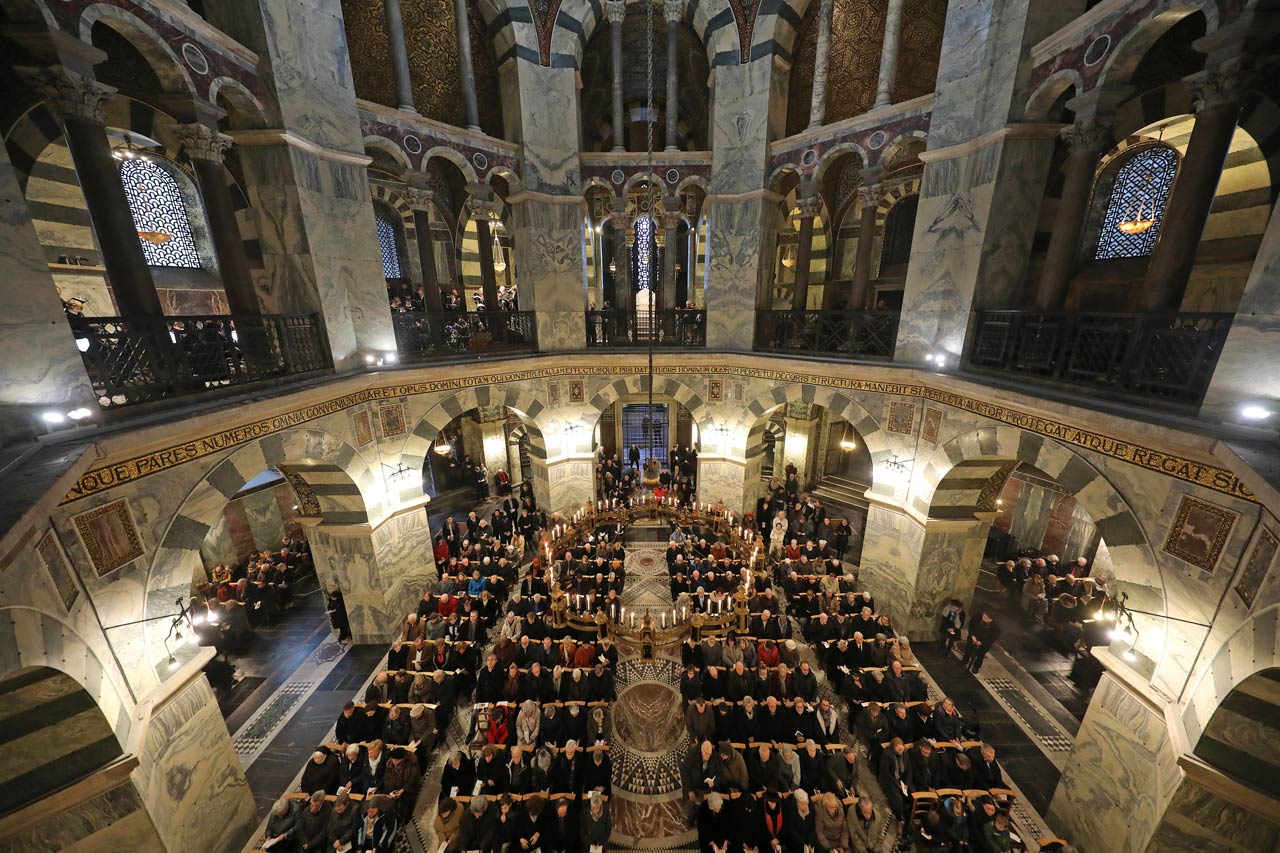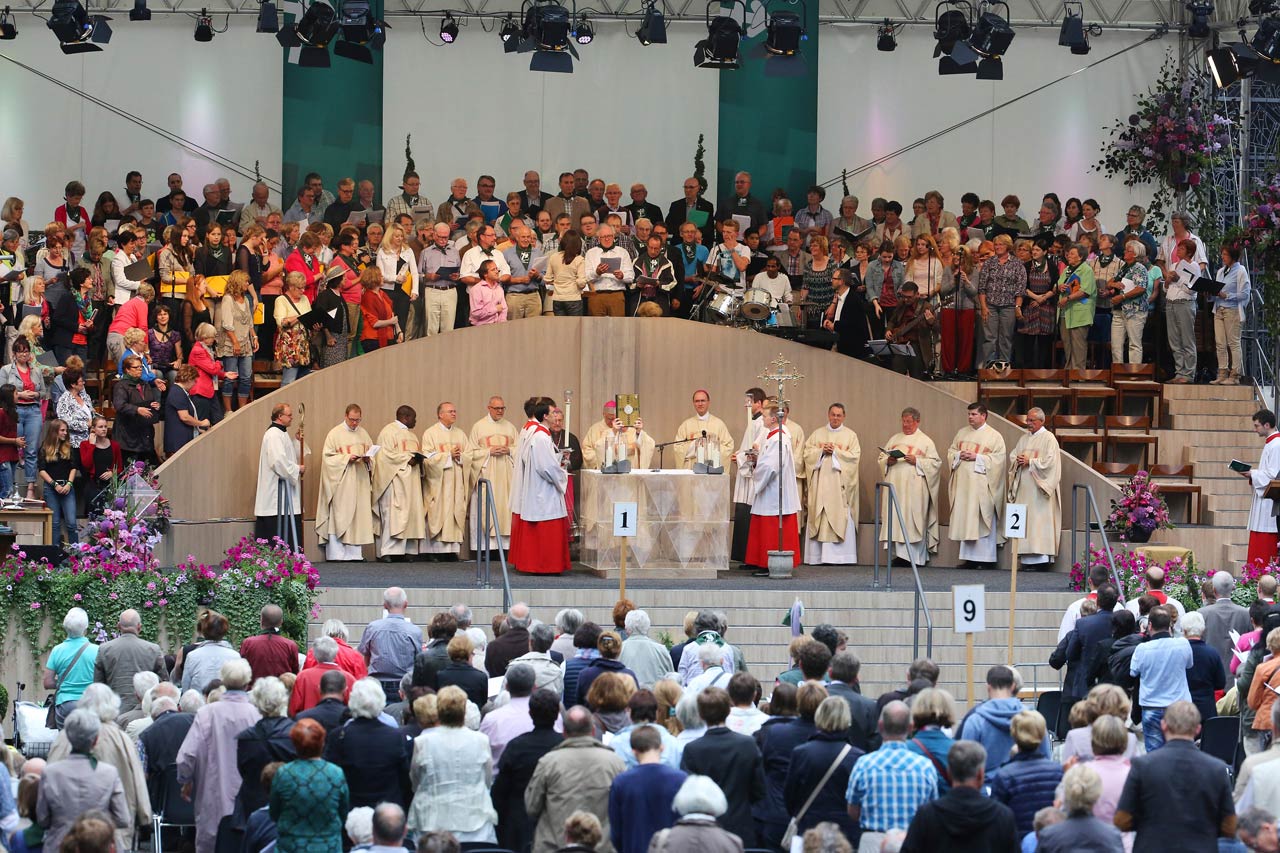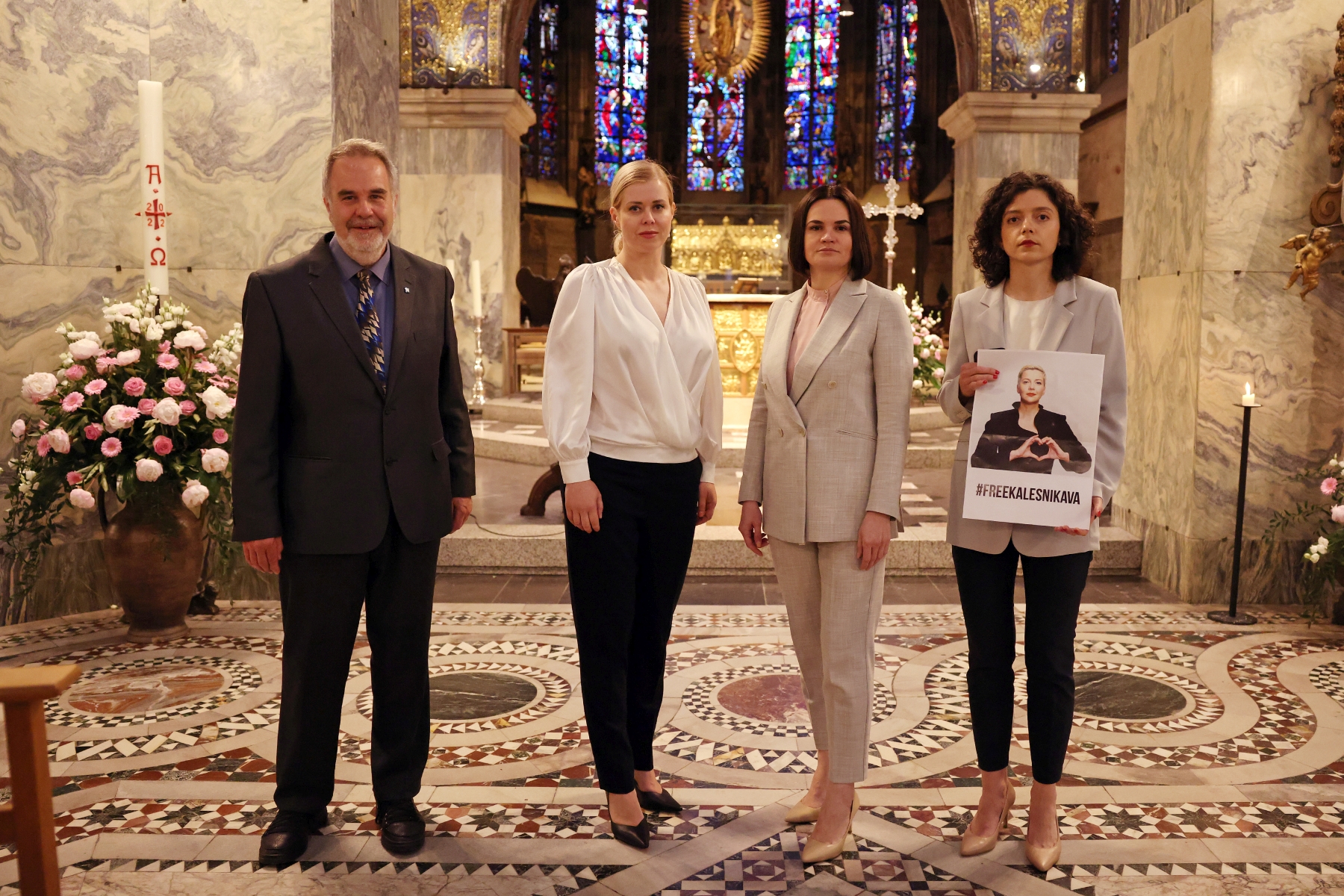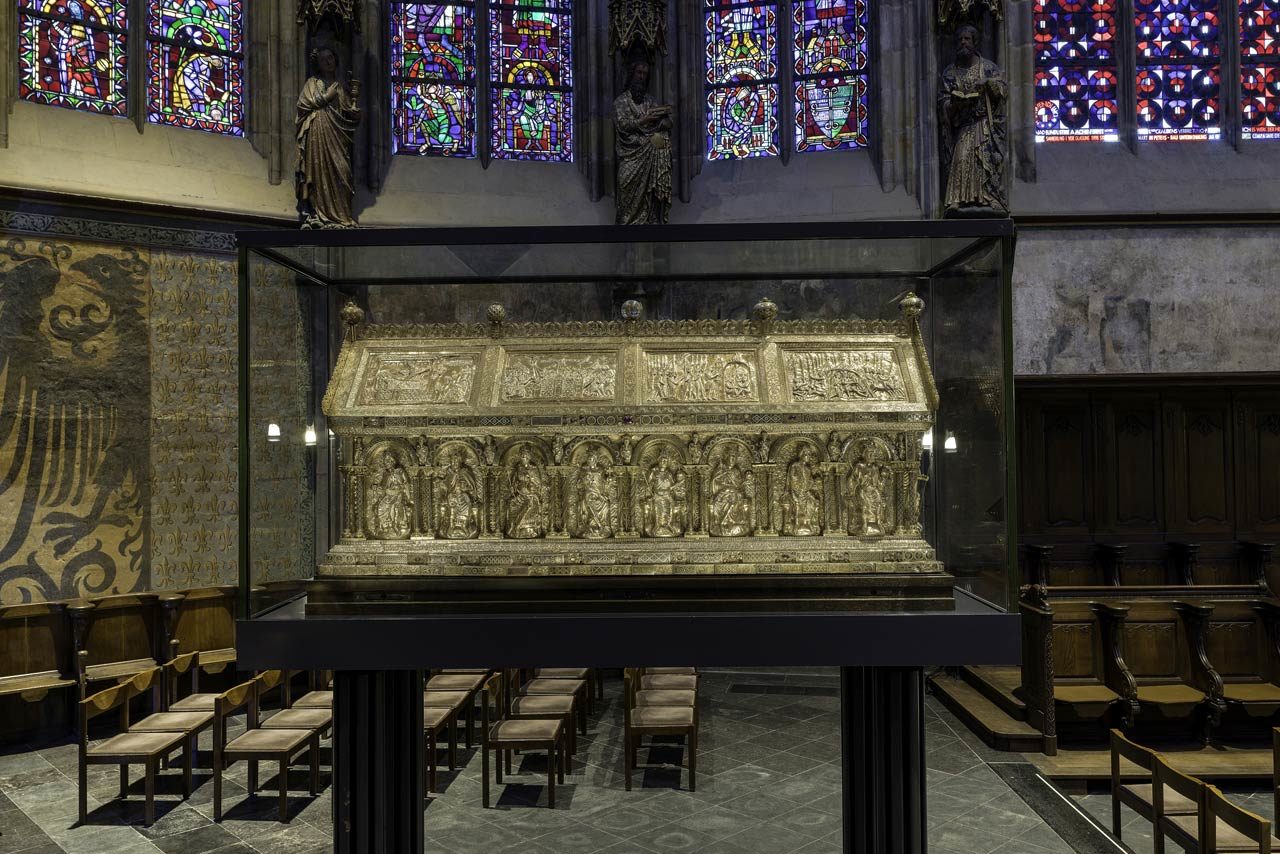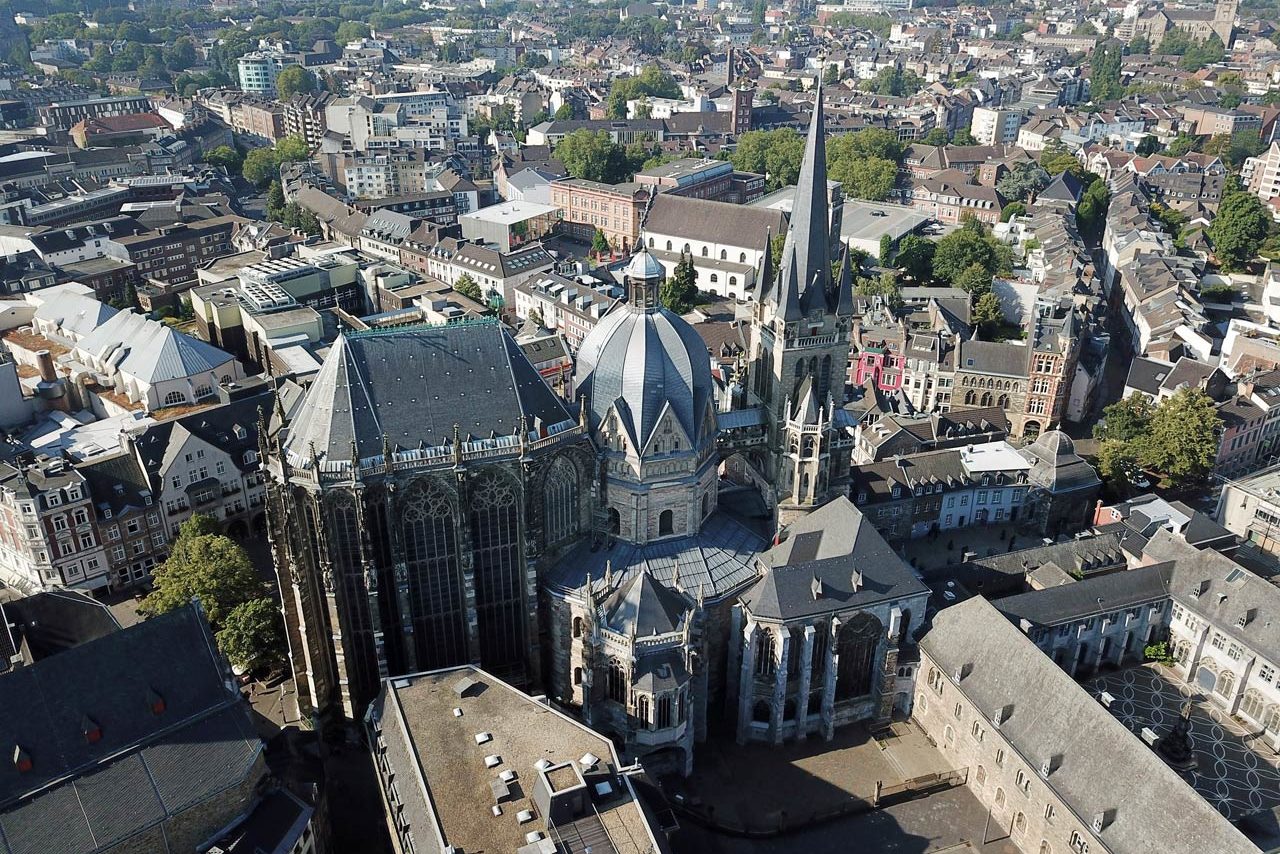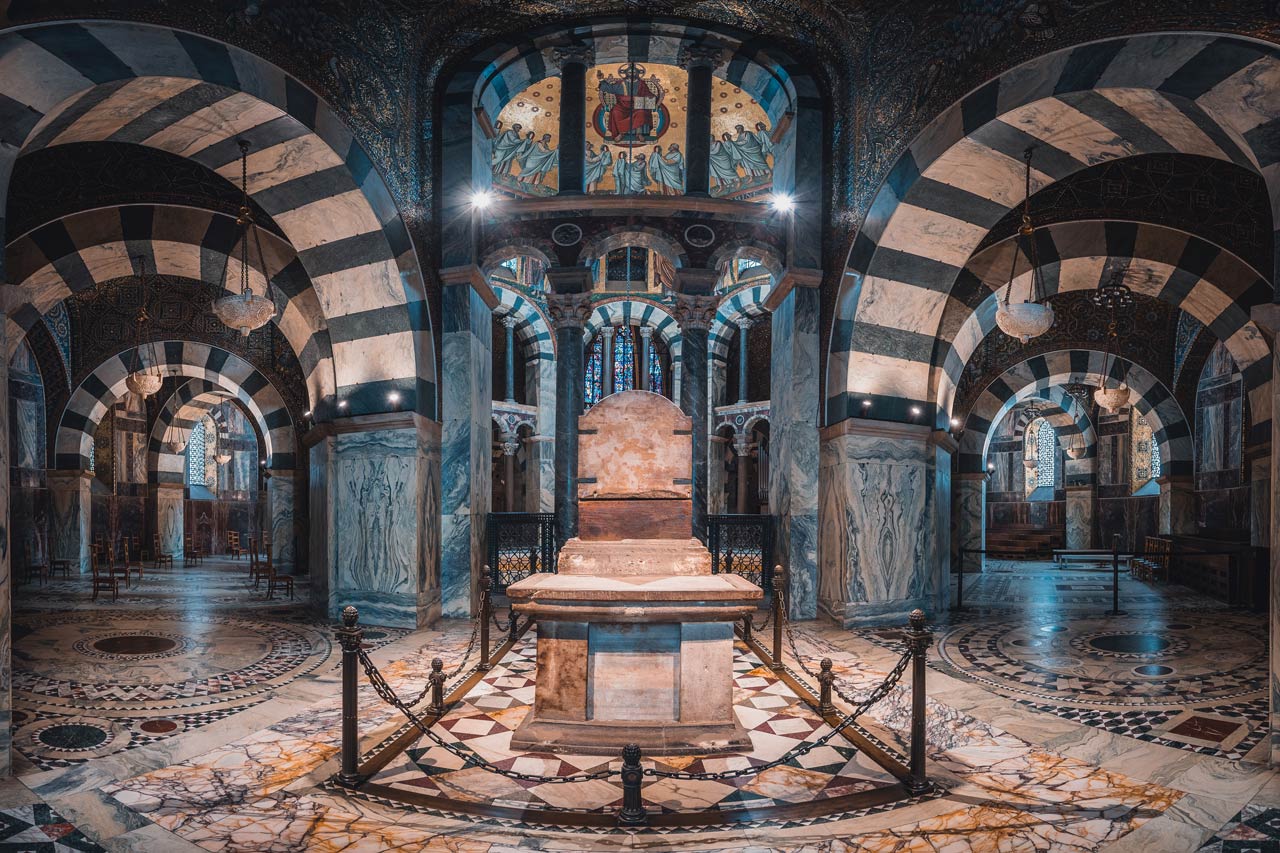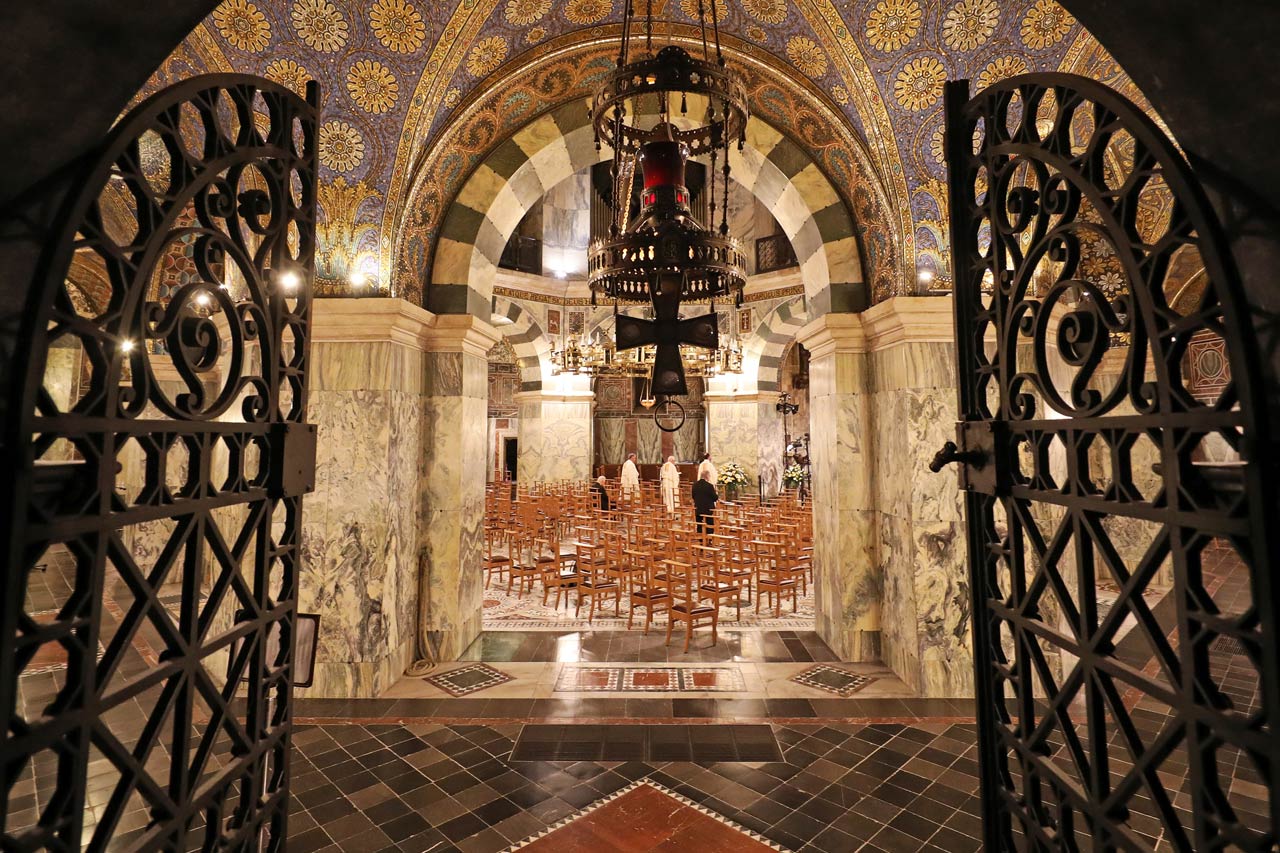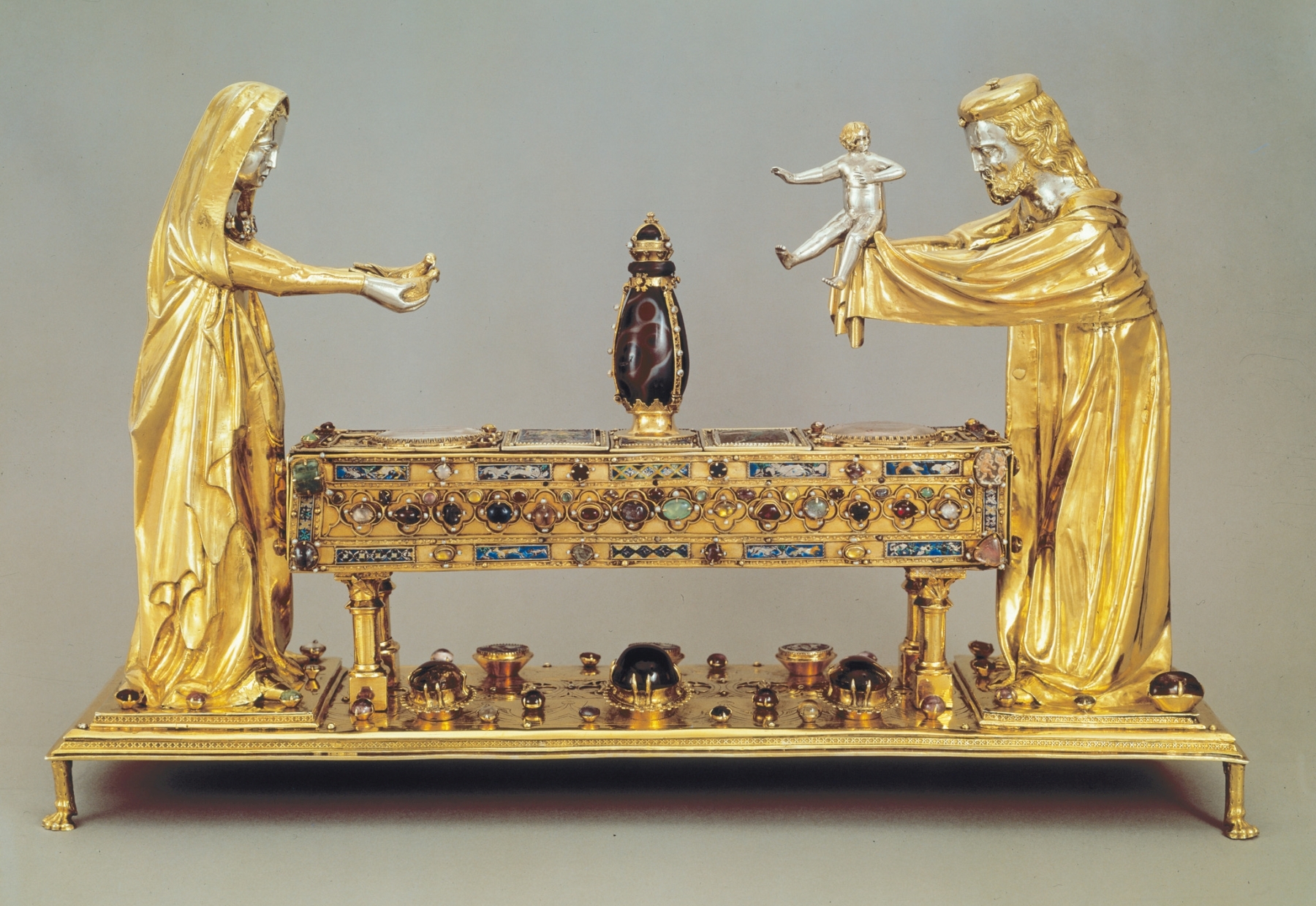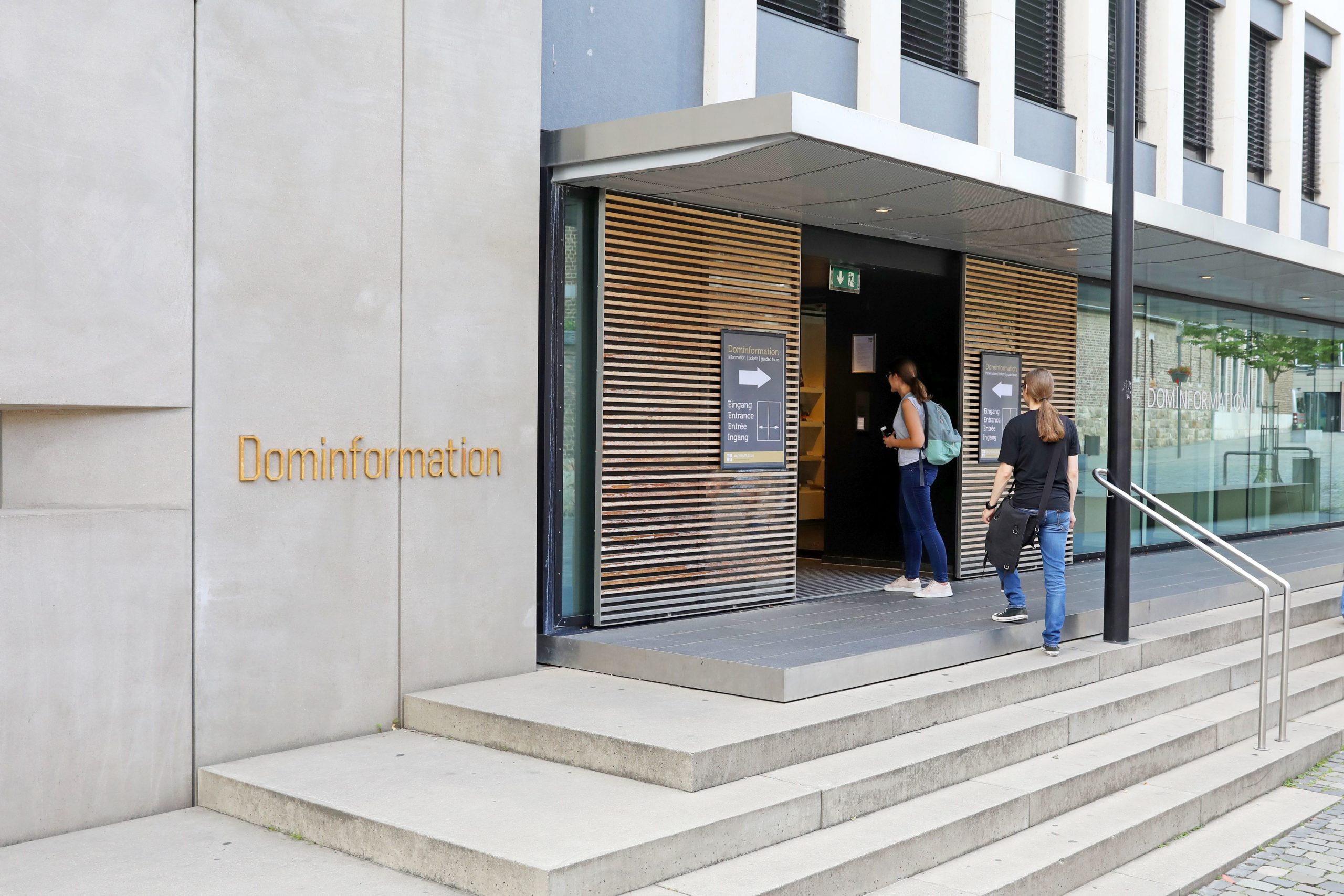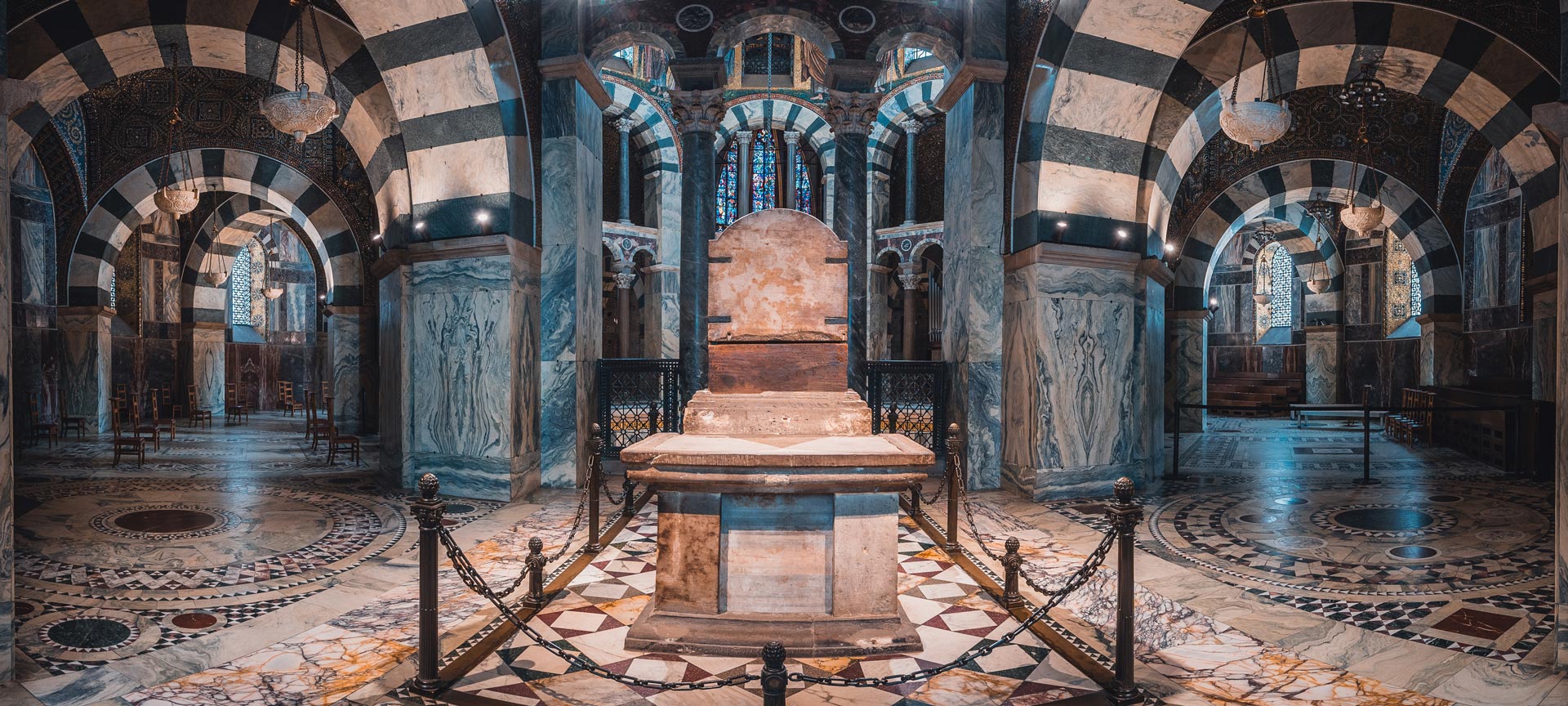The imperial throne
The imperial throne looks less impressive than you might expect considering its historical significance. While it is often said to be the throne of Charlemagne himself, this cannot be unequivocally verified.
The throne was first mentioned in writing in the context of the coronation of Otto I in 936. From that time on, every Roman-German King had to sit on the throne to legitimise his claim to power. Between 936 and 1531, a total of 30 kings were crowned in Aachen.
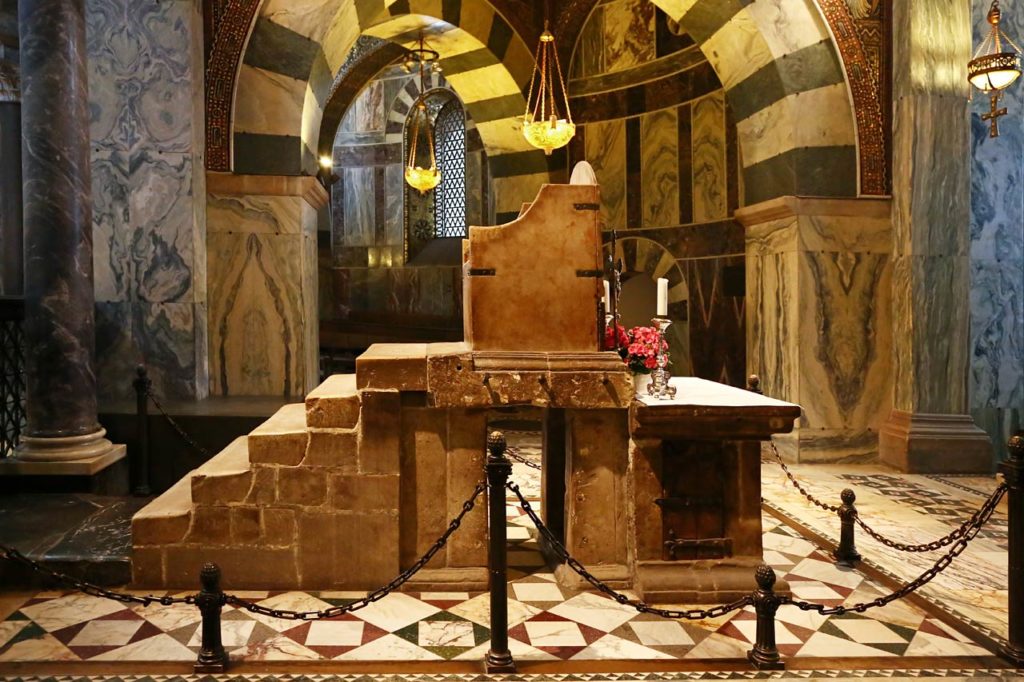
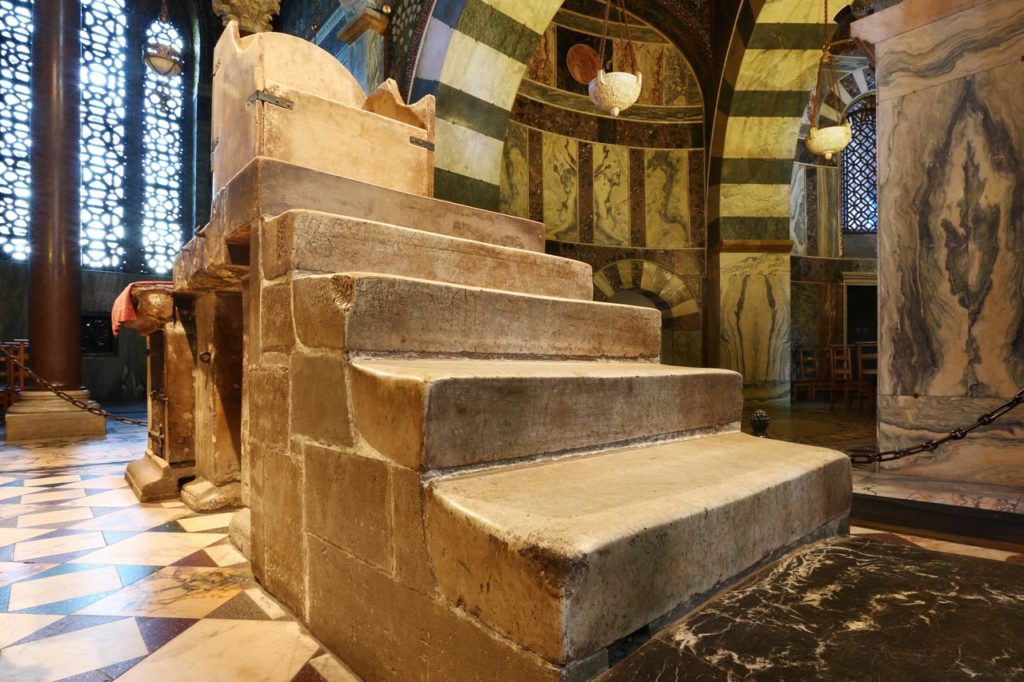
The imperial throne is to be found in the western gallery on the upper storey of the Palatine chapel (Hochmünster). It is composed of four whitish marble slabs, held together by bronze angle brackets. The fine lines carved into one of the side slabs might have served as the board for the ancient strategy game of “nine men’s morris”, suggesting that the slabs had previously been used as base plates. The six steps ascending to the throne are made from marble columns. The Nicasius Altar adjoins the back of the throne and is composed of parts of a Carolingian altar. It was consecrated in 1305.
One question remains unanswered: why was the throne built from these conspicuously plain and simple marble slabs? According to a popular theory in Aachen, both the slabs and the steps were taken from the Church of the Holy Sepulchre in Jerusalem. Should this be true, they would themselves be relics, meaning that aesthetic aspects were of secondary importance. However, there is no scientific evidence to support this theory.
